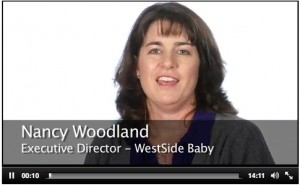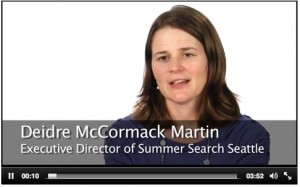Nonprofit bloggers are having a field day with “the” latest report, Underdeveloped: A National Study of Challenges Facing Nonprofit Fundraising. The study is based on a national survey of more than 2,500 development directors and executive directors and reflects a dismal state of affairs in the field of fundraising, including heavy turnover and vacancies in development director positions.
 Small shop development directors fare the worst in this report.
Small shop development directors fare the worst in this report.
Fifty-seven percent of development directors working at organizations with budgets under $1 million plan to leave their organizations within one year, compared to 38% of development directors working at organizations with budgets over $10 million. Twenty-seven percent of small shop fundraisers plan to leave the field of development altogether, compared to 11% of the development directors at larger organizations. And the executives surveyed reported that 38 percent of development directors in smaller nonprofits are novices when it comes to securing gifts.
These numbers aren’t surprising.
But I found it interesting, and more than a little bit irritating, that the study disregarded both the challenges and skill-set integral to successfully managing small shop fundraising.
Imagine leading a development team of three, five…35 people. You have a dedicated grant writer, an individual giving manager, a development associate to handle all aspects of stewardship, perhaps an event planner and a major gifts officer or two.
Now imagine fundraising in a small shop. Hard to imagine. After all, even a seasoned CFRE would blanch at the very thought of a position that entailed such diverse skills as grant proposal writing, individual giving, copy-writing, stewardship, database management, major gift officer, social media, data entry, website creation and maintenance, event planning and more… all at a salary level of less than $50,000.
In my own experience as a “small shop” fundraiser for a number of nonprofit organizations, I have personally:
- paid for my own books and training (more often than not)
- created donor databases using Access because my employers were unwilling to commit to the cost of a CRM system (Excel is not a database – and I refuse to use it as one)
- taught myself HTML coding and Dreamweaver (again, using books I paid for and even my own software) to ensure that the organization had a dynamic website
- been shot down more often than not on any type of approach that remotely smacked of innovation (even something as basic as creating a targeted mailing using the principles of Mal Warwick’s The Mercifully Brief, Real World Guide to Raising $1,000 Gifts By Mail or, gasp!, collecting email addresses)
- paid for gas, postage and even printing out of pocket
- been derailed from increasing communications from one appeal letter a year to a comprehensive calendar of communications (because of reluctance to expend money on printing)
- been prohibited from attending board meetings (seriously)
- had my attempts to create a comprehensive retention and stewardship plan derided by leadership
- been admonished to regularly trim our database to keep total records under 500 (maintaining the *free* status of our CRM)…even though I had been hired to grow individual giving!
- and let’s not forget the dreaded red pen!
Apparently, I was the only one committed to funding the organization’s mission!
And, as a consultant, I’ve been brought on for one-hour board training where it was apparent that the organization had no consistent culture of philanthropy, and the board was warily tapped for a *fundraising* training once or twice a year.
In short, small shop fundraising is a tough, tough, tough job. Did I mention tough? Is it any wonder that the turnover rate is highest among small shop fundraisers. Far too often an organization’s board and executive director are focused on the here and right now. And a smart development director is focused on the long-term sustainability of the organization
So, what’s the answer?
Aside from the recommendations sited in the report, organizations must view fundraising as their number one priority. Savvy nonprofit professionals understand the value of a high quality, consistent training program. Understand donor-centricity. Own it.
You want the truth? If you’re not committed to funding your mission, you’re not committed to your mission. Click To TweetExecutive directors can take a cue from Deidre McCormack Martin Executive Director of Summer Search Seattle. Deidre gets it.
And every organization should make the time to watch West Side Baby’s case study of how Executive Director, Development Director and Board work together to raise money joyfully.

One last rant. Technology is not the wave of the future. It’s here and it’s now and you can’t afford to continue to ignore it. Get over your fears and dive on in.
Related posts:
Are you throwing the baby out with the bathwater?
Creating a Culture of Philanthropy | Cara’s Motivations
Nonprofits Need to Lose the Free Mindset


















 I can’t wait to meet with you personally.
I can’t wait to meet with you personally.
Comments on this entry are closed.